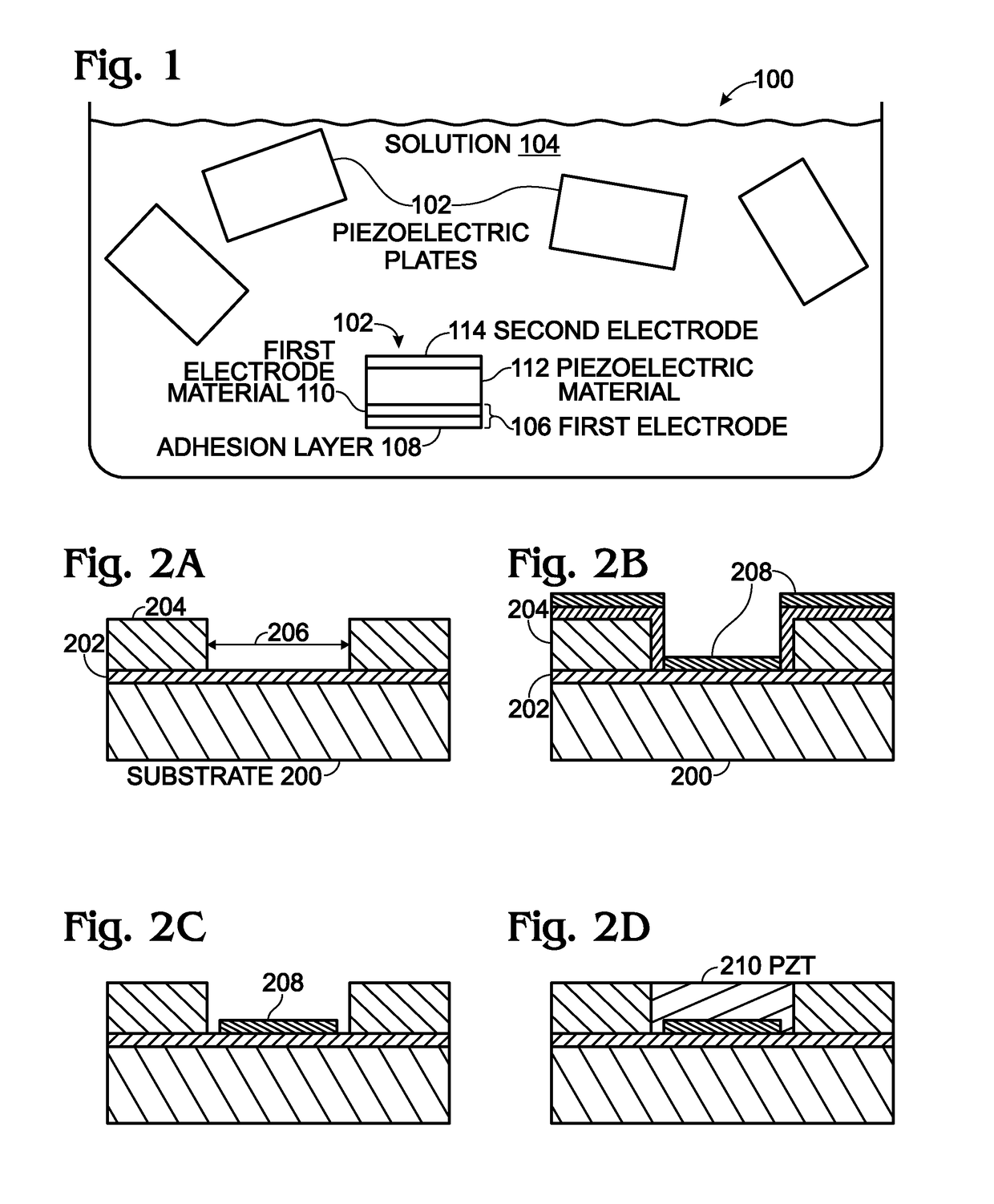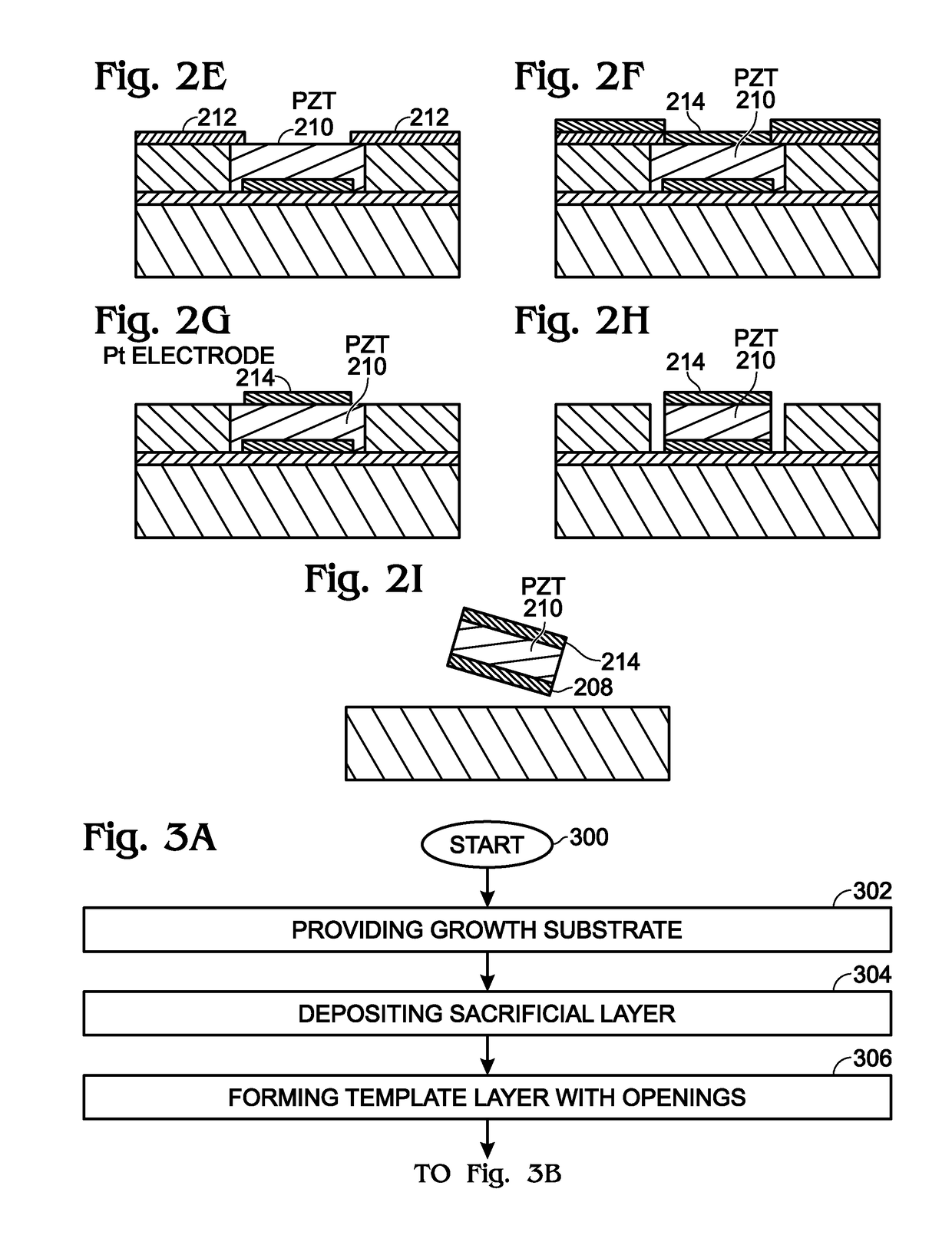Fabrication and Harvest of Piezoelectric Plates
a piezoelectric plate and fabrication technology, applied in the direction of piezoelectric/electrostrictive/magnetostrictive devices, basic electric elements, electrical equipment, etc., can solve the problems of limiting the sensitivity of the ultrasonic sensor array, limiting the use of such a structure, and high sintering temperature incompatible with the formation of such materials
- Summary
- Abstract
- Description
- Claims
- Application Information
AI Technical Summary
Benefits of technology
Problems solved by technology
Method used
Image
Examples
Embodiment Construction
[0014]FIG. 1 is a partial cross-sectional view of a fluidic assembly solution 100 of piezoelectric plates. A plurality of piezoelectric plates 102 are suspended in a solution 104. Each plate 102 comprises a planar first electrode 106 having an adhesion layer 108 / first electrode material 110 stack. A piezoelectric material 112 overlies the first electrode material 110, and a planar second electrode 114 overlies the piezoelectric material. For clarity, only one piezoelectric plate is shown in detail. Note: the second electrode is not necessarily a “top” electrode, as the plates are not aligned in any particular manner when in solution.
[0015]The piezoelectric material 112 may be one of the following: lead zirconium titanate (PZT), barium titanate (BaTiO3), polyvinylidene fluoride (PVDF), polyvinylidene fluoride co-polymers (P(VDF-TrFE), quartz, zinc oxide (ZnO), aluminum nitride (AlN), or lanthanum-doped lead zirconium titanate (PZLT). However, the piezoelectric plates are not limited ...
PUM
 Login to View More
Login to View More Abstract
Description
Claims
Application Information
 Login to View More
Login to View More - R&D
- Intellectual Property
- Life Sciences
- Materials
- Tech Scout
- Unparalleled Data Quality
- Higher Quality Content
- 60% Fewer Hallucinations
Browse by: Latest US Patents, China's latest patents, Technical Efficacy Thesaurus, Application Domain, Technology Topic, Popular Technical Reports.
© 2025 PatSnap. All rights reserved.Legal|Privacy policy|Modern Slavery Act Transparency Statement|Sitemap|About US| Contact US: help@patsnap.com



